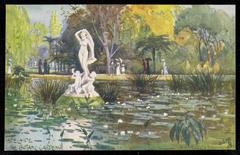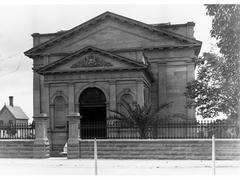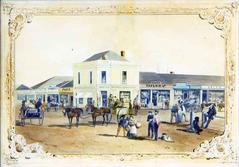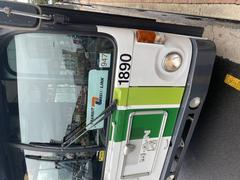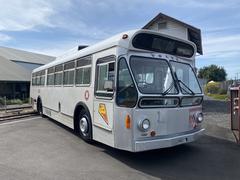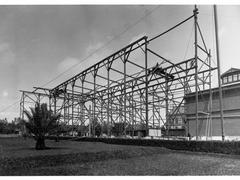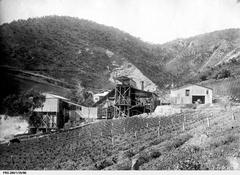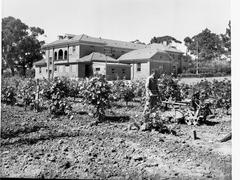Migration Museum Adelaide: Visiting Hours, Tickets, and Historical Sites Guide
Date: 04/07/2025
Introduction: Adelaide’s Migration Museum—History and Cultural Significance
Located in the heart of Adelaide, South Australia, the Migration Museum stands as both a historical landmark and a vibrant cultural institution. Established in 1986, it is Australia’s oldest migration museum and among the first globally devoted to exploring the profound social, cultural, and historical impacts of migration (Wikipedia). The museum is set within colonial-era bluestone buildings that once housed the Destitute Asylum and a “Native School” for Aboriginal children, offering visitors a unique opportunity to connect with layers of South Australian history.
The museum’s mission is to foster understanding and respect for the diverse migrant communities that have shaped the state. Its exhibitions, programs, and community engagement initiatives highlight both migrant journeys and Indigenous histories, making it a vital hub for education, dialogue, and celebration of multiculturalism.
Table of Contents
- Introduction
- History and Cultural Significance
- Exhibitions and Programs
- Community Engagement and Education
- Visitor Information
- Interactive and Family-Friendly Features
- Nearby Attractions
- Tips for Visitors
- Frequently Asked Questions
- Conclusion and Call to Action
History and Cultural Significance
Origins and Establishment
Founded through extensive community consultation with representatives from 53 cultural and language groups, the Migration Museum opened in 1986 under the operation of the History Trust of South Australia (History Trust). This collaborative ethos continues to shape its evolving exhibitions and programs.
The Site: Layers of Social History
The museum’s bluestone buildings were once the Destitute Asylum (1850–1918) and previously the “Native School” for Aboriginal children (Wikipedia). A Reconciliation Plaque honors the Kaurna people, traditional custodians of the land, reflecting the museum’s commitment to truth-telling and reconciliation.
Exhibitions and Programs
Permanent Exhibitions
- In This Place: Explores the history of the site, formerly the Destitute Asylum, through personal stories and artifacts (Migration Museum).
- Impact: Chronicles the effects of migration and settlement on South Australian society, economy, and culture.
- Immigration in the 20th Century: Examines migration policies and personal stories from the 1900s, including post-war migration and refugee arrivals (Outreach Education).
These exhibitions use artifacts, photographs, and multimedia displays to create an immersive and reflective visitor experience (WhichMuseum).
Temporary and Rotating Exhibitions
The museum frequently presents temporary exhibitions that provide new perspectives on identity, belonging, and community milestones. Highlights include:
- About Face Exhibition: Portraiture and personal stories exploring identity (Migration Museum Temporary Exhibitions).
- Face To Face Exhibition: An intergenerational art project linking aged care residents and students (Migration Museum Events).
- 75 Years of the Croatian Club Adelaide: Celebrates the contributions of Adelaide’s Croatian community.
- AUSSIES! The Migration Museum Banners Project: Community banners celebrating migrant heritage.
Some special exhibitions may require a modest entry fee, but general admission is always free (Migration Museum).
Collections and Artefacts
The museum’s collection includes:
- Migrants’ personal belongings such as suitcases, clothing, and religious items (Google Arts & Culture).
- Extensive photographic archives documenting arrival and settlement.
- Official documents like passports and immigration papers.
- Community banners and textiles, symbolizing unity and diversity.
- Digital installations and oral histories for interactive learning.
The collection is continually enriched through donations and community partnerships.
Community Engagement and Education
The Migration Museum is a dynamic hub for community projects and educational programs.
- Face To Face Project: Connects aged care residents and students through shared storytelling (Migration Museum Events).
- Arabic Arts Alive 2025: Celebrates Arabic music, dance, and storytelling (Arabic Arts Alive 2025).
- Migrant Heritage Walks: Guided and self-guided tours highlighting Adelaide’s multicultural landmarks.
- Education Programs: Curriculum-aligned workshops and tours for students, fostering cultural respect (Outreach Education).
Partnerships with cultural associations, schools, and artists ensure programming reflects South Australia’s diversity.
Memorials and Symbolic Spaces
- Memorial Wall: Honors refugee communities.
- Settlement Square: Commemorates families who have made South Australia home.
- Courtyard of Curiosities: Hosts cultural events and festivals such as the Adelaide Fringe (Adelaide Fringe).
Visitor Information
Visiting Hours and Tickets
- Open: Tuesday to Sunday, 10:00 AM to 5:00 PM
- Closed: Mondays and public holidays
- Admission: Free for all visitors (Migration Museum Visit)
- Guided tours: Free on weekends; group tours available by appointment
Location and Directions
- Address: 82 Kintore Avenue, Adelaide, SA 5000
- Transport: Easily accessible by public bus, tram, and train
- Parking: Metered street parking and public car parks nearby
Accessibility and Facilities
- Wheelchair and scooter accessible in most galleries
- Accessible restrooms
- Guide and assistance dog-friendly
- Free Wi-Fi and seating areas
- Virtual tours and digital exhibitions for remote access (Google Arts & Culture)
Interactive and Family-Friendly Features
- Discovery Drawers: Hands-on activities for children (Migration Museum What’s On)
- School Holiday Programs: Family workshops and activities
- Self-guided Resources: Printed and digital guides for independent exploration
Museum Layout and Photographic Spots
The museum’s galleries are arranged for an intimate, chronological journey through migration history, typically explored in 1–2 hours. The historic courtyard and engraved family pavers provide excellent photographic opportunities. Check the museum’s website for specific photography policies.
Nearby Attractions
The Migration Museum’s central location puts you within walking distance of:
- State Library of South Australia
- South Australian Museum
- Art Gallery of South Australia
- Adelaide Botanic Garden
These sites offer a comprehensive cultural experience for visitors exploring Adelaide’s historical precinct.
Tips for Visitors
- Allow 1–2 hours for your visit
- Visit on weekday mornings to avoid crowds
- Book group tours in advance
- Check the website for updates on temporary exhibitions and special events
- No on-site café, but many nearby options in the city centre
Frequently Asked Questions (FAQ)
Q: What are the Migration Museum’s visiting hours?
A: Tuesday to Sunday, 10:00 AM to 5:00 PM; closed on Mondays and public holidays (Migration Museum Visit).
Q: Is admission free?
A: Yes, general admission is free. Some special programs may have a small fee.
Q: Are guided tours available?
A: Yes, free on weekends; group tours by appointment.
Q: Is the museum accessible?
A: Fully wheelchair and scooter accessible, with accessible facilities and virtual tours.
Q: Are there family-friendly activities?
A: Yes, including interactive displays and Discovery Drawers for children.
Q: What other Adelaide attractions are nearby?
A: The museum is close to Rundle Mall, the State Library, and the South Australian Museum.
Conclusion and Call to Action
The Migration Museum Adelaide is more than a collection of artifacts; it is a living institution honoring the stories of migration, settlement, and Indigenous heritage that have shaped South Australia. With free admission, central location, and engaging exhibitions, it’s an essential stop for anyone interested in Adelaide’s multicultural past and present. Enhance your visit by joining a guided tour, participating in community events, or exploring the museum’s digital resources.
Plan your visit today by consulting the official Migration Museum website, and don’t forget to download the Audiala app for exclusive content and updates. Follow the museum on social media to stay informed about new exhibitions and community projects. Make your exploration of Adelaide’s rich cultural landscape truly memorable!
